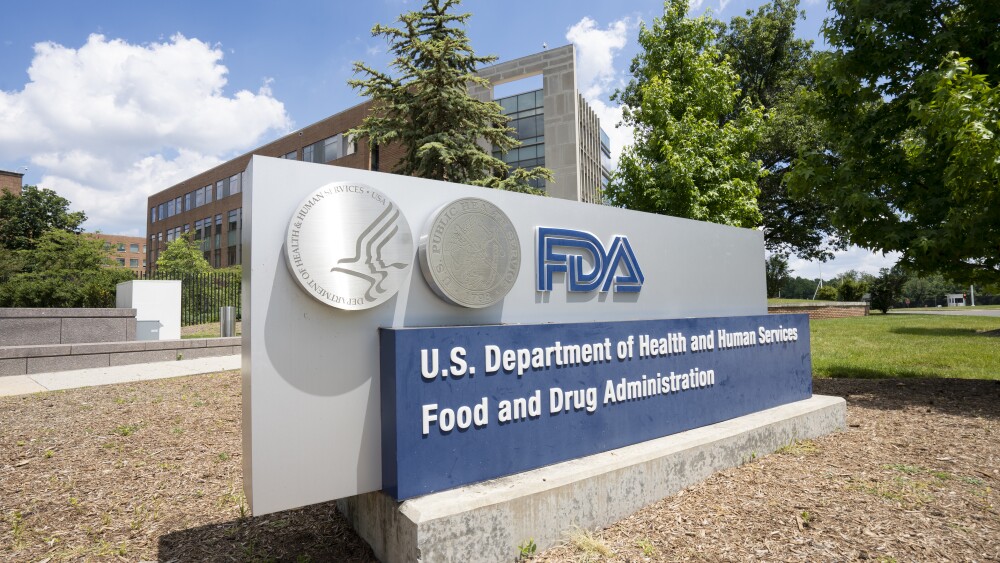Here’s how companies can ensure they’re in compliance with new requirements that go into effect in August.
Nitrosamine contamination has become one of the most pressing issues facing the pharmaceutical industry today. In the past few years, these potentially cancer-causing substances have grabbed the public’s attention and become a major focus of regulators, prompting the adoption of rigorous new FDA guidelines that will go into effect this summer.
Since 2018, the FDA has issued more than 500 recalls because of unacceptable levels of nitrosamines in active pharmaceutical ingredients (APIs). As executive director of analytical at SK Pharmteco, I work with pharmaceutical clients to provide comprehensive testing services for a broad range of compounds, including impurities such as nitrosamines. Based on what we’re seeing, it’s clear that the spotlight on nitrosamines will only get brighter with manufacturers having to meet new FDA guidelines for these compounds by August.
The new FDA guidelines, issued last year, are both comprehensive and complex. They cover more than 250 nitrosamine compounds and apply to every drug on the market or in development. These guidelines require detecting minute levels—down to the parts per billion—with limits that vary depending on the specific nitrosamine.
The stakes are high for getting it right. Noncompliance triggers an FDA Class II recall, which means drugs have to be immediately pulled from shelves. The FDA will not approve new drugs unless they meet the guidelines. Compliance may necessitate reformulation of products with different excipients and inputs. Additionally, it could require redesigning production processes, as nitrosamines can form through chemical reactions between precursors that are otherwise not hazardous on their own. In light of these stakes, pharma executives must ensure they have a robust testing program in place now and are proactively addressing any issues with noncompliant nitrosamine levels.
A Fast-Developing Issue
Nitrosamines can be found in a wide range of products, from foods and beverages to cosmetics and pharmaceuticals. These compounds are created when amines react with nitrosating agents such as nitrous acid, nitrogen oxides and nitrites.
Nitrosamines were observed by chemists in the late 1800s, but the dangers were not understood at the time. In the 1970s, William Lijinsky, laboratory director at the National Cancer Institute’s Frederick Cancer Research and Development Facility, became a leading voice in raising concerns about their link to cancer. Initial concerns focused on tobacco products and foods, such as processed meats, where smoking or curing can introduce nitrites to trigger the chemical reaction.
In the following decades, concerns grew as more studies indicated a link between different nitrosamines and cancer. Studies also showed that even small amounts of nitrosamines could be dangerous, leading regulators and experts to place greater scrutiny on their presence in products such as pharmaceuticals.
In 2018, the FDA began an investigation into nitrosamine impurities in drugs that led to high-profile recalls for heartburn medicines. In 2020, the FDA issued its first guidance on the compounds, making nitrosamines an issue for the entire pharmaceutical industry for the first time.
The FDA’s actions corresponded with increasing public concern about potential carcinogens in everything from food to toys and even water. While deaths from cancer have declined in the U.S., the number of new cases continues to climb each year, according to the American Cancer Society.
The existence of nitrosamines in prescription drugs is particularly troubling because the medications are intended to treat illnesses, not cause them. They’re also intended to be taken on a regular basis. The FDA’s rapid and comprehensive response to the nitrosamine issue signals that it has taken a place among the agency’s top priorities in protecting the public.
SK Pharmteco has seen pharma’s quick response to this change. Since the FDA first issued guidelines in 2020, our services for nitrosamine testing have grown more than eight-fold, making them one of the top three areas for our analytical business unit.
A Matrix of Compliance
The scope of FDA’s 2020 guidance was limited to six previously observed nitrosamines and nonspecific guidance for other potential nitrosamines. The agency’s guidelines for nitrosamines will take a significant step forward in August, creating an even greater need for robust testing.
The new guidance includes specific assessment for any potential Nitrosamine Drug Substance Impurities (NDRSIs). These substances could be contained in anything in the drug or used in production of the drug—the APIs, intermediates, solvents or inactive ingredients. Even if each of the inputs are clear by themselves, NDRSIs can be created when the inputs are combined, so an assessment is needed for every drug marketed in the U.S.
Because each nitrosamine has a different potential effect, the FDA uses a potency categorization system depending on the particular impurity and the dose for the drug. The result is a complex matrix for testing to ensure compliance across hundreds of potentially cancer-causing substances with countless pathways to creating those substances.
Technical Challenges in Testing
This matrix has raised the bar on testing and compliance for the pharma industry. For other impurities, testing is usually focused on a smaller set of substances and concentrations in the parts per million. Under the new FDA guidelines, the acceptable limits for certain nitrosamines in some drugs could be as low as one part per billion.
Detecting a substance at these minute levels requires the most advanced liquid, gas and high-resolution mass spectrometers. It also requires experts in testing to read the results and develop testing platforms. To detect all possible forms of nitrosamines, lab professionals often have to create tailored testing platforms that can detect multiple impurities, each with its own acceptable level. In working with clients, SK Pharmteco has created more than 100 different platforms for testing.
Robust testing can be complex and time-consuming, but the payoff is worth it. Aside from avoiding the consequences associated with noncompliance, companies can benefit from positive aspects of thorough testing. I.e., companies can typically justify skipping lot testing by reaching 30% of acceptable limits and typically justify no routine testing by reaching 10% of acceptable limits.
A Looming Deadline
If they haven’t already, pharma companies should take action now to implement a robust testing program. Testing typically takes six weeks from developing and validating the appropriate testing platform to providing results. With the August deadline approaching, many labs already have testing backlogs.
Pharma executives should also be developing a long-term strategy for nitrosamine testing and compliance. The FDA’s list of regulated nitrosamines will continue to grow, and the public’s concern over this issue is likely to continue to increase as well. The American Cancer Society estimated the U.S. had a record 2 million new cases of cancer last year.
Every drug company operating in the U.S. will need to create a flexible, robust and sophisticated plan that can continue to evolve. Compliance with the new guidelines in August should be viewed as a starting point for addressing the ongoing challenge of nitrosamine contamination.






